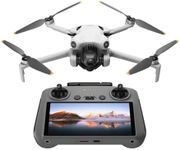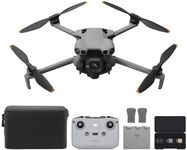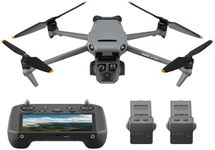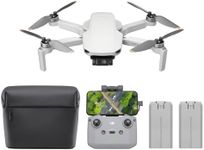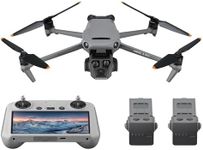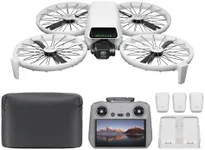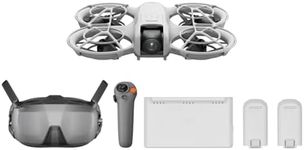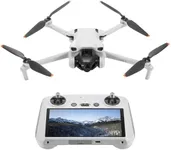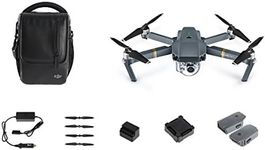Buying Guide for the Best Dji Drones
Choosing the right DJI drone can be a thrilling yet challenging task, especially with the variety of models available. To make an informed decision, it's essential to understand the key specifications that differentiate these drones. By focusing on your specific needs and preferences, you can find a drone that perfectly suits your requirements, whether you're a hobbyist, a professional photographer, or an adventurer. Here are the key specs to consider when selecting a DJI drone.Camera QualityCamera quality is crucial if you plan to use your drone for photography or videography. This spec includes the resolution of the camera, the size of the sensor, and the capabilities of the lens. Higher resolution cameras (like 4K or 1080p) provide clearer and more detailed images, while larger sensors can capture better quality images in low light conditions. If you're a professional photographer, you might want a drone with a high-resolution camera and advanced features like adjustable aperture and HDR. For casual use, a standard HD camera might suffice.
Flight TimeFlight time refers to how long the drone can stay airborne on a single battery charge. This is important because it determines how much time you have to capture footage or explore. Flight times can range from around 20 minutes to over 30 minutes. If you need extended periods of flight for professional shoots or long adventures, look for drones with longer flight times. For casual users or short recreational flights, a drone with a shorter flight time might be adequate.
RangeRange is the maximum distance the drone can travel from the controller while maintaining a stable connection. This is important for capturing footage over large areas or for exploring vast landscapes. Ranges can vary from a few kilometers to over 10 kilometers. If you need to cover large distances, opt for a drone with a longer range. For general use or smaller areas, a shorter range might be sufficient.
Obstacle AvoidanceObstacle avoidance technology helps prevent the drone from crashing into objects by detecting and navigating around them. This is particularly important for beginners or for flying in complex environments. Drones with advanced obstacle avoidance systems can detect obstacles in multiple directions and are ideal for safe flying in crowded or challenging areas. If you're flying in open spaces or are an experienced pilot, you might not need as advanced a system.
PortabilityPortability refers to how easy it is to transport the drone. This includes the size, weight, and whether it can be folded or disassembled. Smaller, lighter drones are easier to carry and are ideal for travel or outdoor adventures. Larger drones might offer better performance but can be more cumbersome to transport. Consider how often you'll be traveling with your drone and choose one that fits your portability needs.
Control FeaturesControl features include the ease of use of the controller, the availability of automated flight modes, and the integration with mobile apps. These features can enhance your flying experience and make it easier to capture the shots you want. Look for drones with intuitive controls and useful flight modes like follow-me, waypoint navigation, and orbit mode. If you're a beginner, simpler controls and automated features can help you get started. Experienced users might prefer more manual control options.
Build QualityBuild quality refers to the materials and construction of the drone. This affects durability and how well the drone can withstand crashes or harsh conditions. Drones made with high-quality materials like carbon fiber or reinforced plastics are more durable and can handle rough use. If you plan to fly in challenging environments or need a drone that can take a beating, look for one with robust build quality. For casual use, standard build quality might be sufficient.

